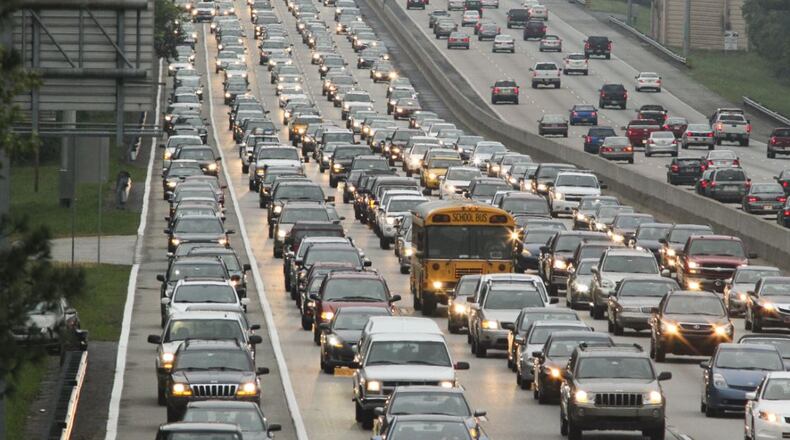Metro Atlanta would spend nearly $173 billion over the next 30 years to address traffic and transportation problems under a plan the Atlanta Regional Commission Board approved Wednesday.
The commission's plan calls for major highway expansion projects such as toll lanes on the top half of the Perimeter. It includes new transit lines such as commuter rail to Clayton County, the Clifton Corridor light rail line in Atlanta and a bus rapid transit line along I-85 in Gwinnett County. And billions of dollars would fund smaller initiatives, such as new bike paths and programs to encourage carpooling.
Despite those efforts, traffic is still expected to get worse in coming decades as the region adds nearly 3 million residents — a population the size of metropolitan Denver. But the plan’s advocates say it will address key traffic bottlenecks and help metro Atlanta keep up with a booming population.
“Rapid growth is still probably the primary challenge we face,” said John Orr, who manages the ARC’s transportation access and mobility division. “It’s going to be a constant challenge to do the best we can.”
The commission's transportation plan covers 20 metro Atlanta counties. It includes about 450 projects designed to move people and a goods more efficiently across a region known for horrible traffic and the occasional highway disaster.
That’s not likely to change as the region adds 2.9 million residents by 2050. That would bring the region’s population to 8.6 million.
Even if every project in the plan is completed — an unlikely scenario, given financial and other constraints — the ARC estimates the average commute time in metro Atlanta will rise from 31 minutes today to 33 minutes in 2050. The agency expects the average traffic speed during morning rush hour to fall from 49 mph to 45 mph. The cost of congestion — the money and time we waste sitting in traffic – is expected to rise from $1,403 per person today to $1,916.
But it could be worse. Without the projects in the plan, all those measures of traffic misery would be even worse in 30 years, the ARC says.
“Congestion is the price that we all pay for living in a vibrant, growing region with a healthy economy,” said David Haynes, an ARC senior planner.
That doesn't mean there's nothing to be done. The plan includes about $27 billion for new interchanges and other highway improvements. Those include the state's $10 billion highway expansion program unveiled by then-Gov. Nathan Deal in 2016. Among other things, the program includes toll lanes on the Perimeter and along Ga. 400, and new I-285 interchanges at I-20 east and west of Atlanta.
The plan also includes $11 billion in transit projects. Among them: a MARTA expansion that Atlanta voters approved in 2016. The expansion project list includes light-rail projects such as the Clifton Corridor and parts of the Atlanta Beltline, as well as the Summerhill bus rapid transit line downtown.
The plan also includes MARTA’s planned commuter rail line to Clayton County. And it includes Gwinnett County’s plans for a bus rapid transit line from Sugarloaf Mills to MARTA’s Doraville station.
The plan would spend about $10 billion on various efforts to encourage people to get out of their cars. That includes more bike and pedestrian paths, along with programs that encourage residents to carpool, work at home and travel at off-peak hours.
About 60% of the proposed spending plan — $102 billion — would pay to maintain or upgrade infrastructure we already have. That means everything from repaving roads to replacing aging buses and rail cars, plus new technology such as "smart" traffic signals that can improve safety and save motorists time.
Gwinnett County Chairwoman Charlotte Nash, who led an ARC committee that approved the plan, said the variety of approaches — roads, transit and alternatives transportation — will serve the region well.
“It really focuses on improvements to all kinds of transportation,” Nash said.
Carrying out the plan will be the hard part. It assumes the state will cover about $50 billion of the cost through motor vehicle excise taxes, lodging fees and other revenue sources. It counts on the federal government to provide $45.5 billion, with various local governments and districts picking up the rest.
Metro Atlanta is less dependent on federal money than it used to be, in part because of a 2015 tax increase for road projects approved by the General Assembly. But Haynes acknowledged it's hard to predict what will be accomplished over the next 30 years.
“We know that not everything that is in this version of the plan is going to get built on the schedule and in the order that we say right now,” he said. “But it’s the best we know at this point.”
About the Author
Keep Reading
The Latest
Featured




